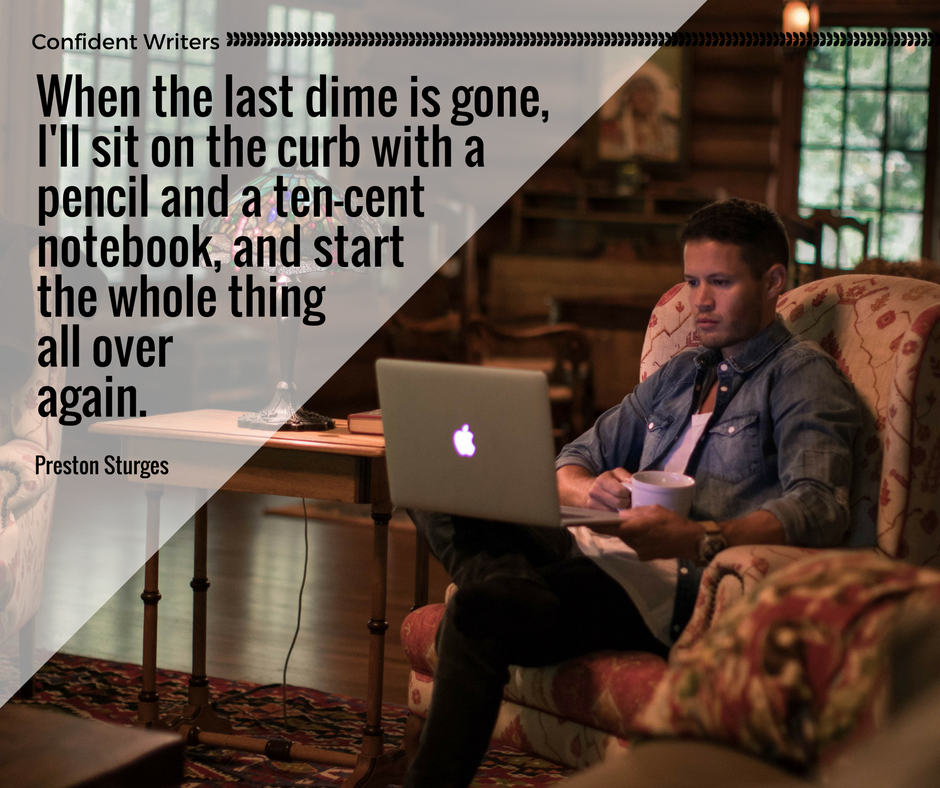
Point of view errors break the fictive dream for readers. This is a problem in general, but in deep point of view where the aim is to create an immersive experience for a reader – this is equivalent of ripping off the virtual reality goggles without warning. A little jarring at best, enough to make you walk away from the story at worst.
What’s A POV Break?
You must remain in one character’s head at any given time unless you’re writing in omniscient pov. I don’t know of anyone writing in omniscient pov anymore, but you’ll commonly find it in the classic novels written 50+ years ago.
“In a hole in the ground there lived a hobbit. Not a nasty, dirty, wet hole, filled with the ends of worms and an oozy smell, nor yet a dry, bare, sandy hole with nothing in it to sit down on or to eat: it was a hobbit-hole, and that means comfort.” JRR Tolkien, The Hobbit
In deep point of view, the reader is wearing the virtual reality goggles and they become your main character. They know everything your character knows, but only what your character knows. This limited point of view writing style means there’s lots of little places where we can cheat and sneak in information that our character has no way of knowing. When we do this, we break the fictive dream for readers.
POV Character Labeling Their Own Emotions
Naming or labeling an emotion is a POV break. Avoid telling the reader how your character feels. How often do you pause and think to yourself – I’m sad. I’m angry. Probably not often, right. In deep point of view, the characters emotions are FELT rather than labeled usually. Now, your main character can identify an emotion in another character but this is a bit of a tight rope.
Shane walked with his hands in his pockets and kicked a can down the street. Depressed, he didn’t want to go home. “Nobody would miss me anyway.”
This is an example of a writer who knows to show not tell but doesn’t trust the reader to figure it out.
Depressed, Shane walked home. “Nobody’s going to miss me anyway.”
This is just telling. There’s no showing here at all.
Shane walked with his hands in his pockets and kicked a can down the street. “Nobody would miss me anyway.”
POV Character Knowing Other’s Emotions
Sometimes the pov break with emotions comes in through other characters. While we might remember that labeling the emotion of our point of view character is wrong, the emotions of other characters tend to slip in.
Jared looked at me and his grief was etched into the creases on his face.
How does my character KNOW the reason for that expression is grief? One way around it is to qualify it for readers.
Jared looked at me and it seemed like his grief was etched into the creases on his face.
As if, seems to, looked like… these types of phrases qualify to the reader that your character is making a guess. They are looking at externals and making an educated guess about how someone feels.
The other way to handle this is avoid naming the emotion and simply present observable details and let the reader decide what the other character is feeling – filtered through what your point of view character knows of the person or situation.
Jared stared at me, his eyes filling up with tears. Half a laugh seemed to erupt from him and he swiped at his eyes. “Look at me. You’d think my mother died not my dog.”
POV Characters Seeing Themselves
First, when your point of view character is describing themselves, can we do away with cataloging features common to every human – like two eyes, a nose, a mouth and so on? Just listing physical features tells the reader very little about your character. Second, most of the time, your point of view character can’t see themselves. They can’t see their faces turn red. They can’t see the smirk on their lips. They can’t see the glow of the fire on their face.
They can FEEL things. They can feel their face heat up from a blush. Instead of “a smirk crossed his lips” instead write “he smirked” or “his mouth pulled to one side” because he can feel those things. Your character might know they have blue eyes, but make sure there’s an organic reason for them to think about this. I can’t remember the last time I sat and thought about the color of my eyes, for instance. Although if you’re writing a self-conscious or beauty-preoccupied teen this might work.
POV Characters Knowing The Thoughts/Motivations Of Others
This one can sneak in if you’re not on the watch for it. In deep point of view, remember that the reader knows everything the main character does – but only what the main character knows.
Steve didn’t even pause to think about my request.
How does the point of view character know this? They can’t know what Steve is thinking. Instead, you could use a qualifying phrase – seems like, looks like, etc. Or you could let your main character observe Steve’s body language.
Steve grabbed my hand and shook on the deal before I could meet his handshake half way.

POV Characters Knowing Things They Can’t See
This happens when we (the writer) step in to make sure the reader knows about something going on that the point of view character doesn’t know. If our point of view character doesn’t know, the reader can’t know either in deep point of view.
Sarah turned to greet the latest guests and didn’t notice Martha slip a fork in her pocket.
If Sarah didn’t see it, wasn’t told about, she can’t share it with the reader. Sarah could turn back around and notice the fork missing and observe an odd expression on Martha’s face, or notice Martha suddenly leave.
My personal favorite are the buzzards circling above the house and the main character is still in bed with the bedroom curtains still closed.
Hope this was helpful. Where do POV breaks sneak into your work?
Been told you should learn Deep Point Of View? Had an editor or critique partner tell you to “go deeper” with the emotions in your fiction? Looking for a community of writers seeking to create emotional connections with readers? Check out the Free Resource Hub and then join the Going Deeper With Emotions In Fiction Facebook group.
Comment